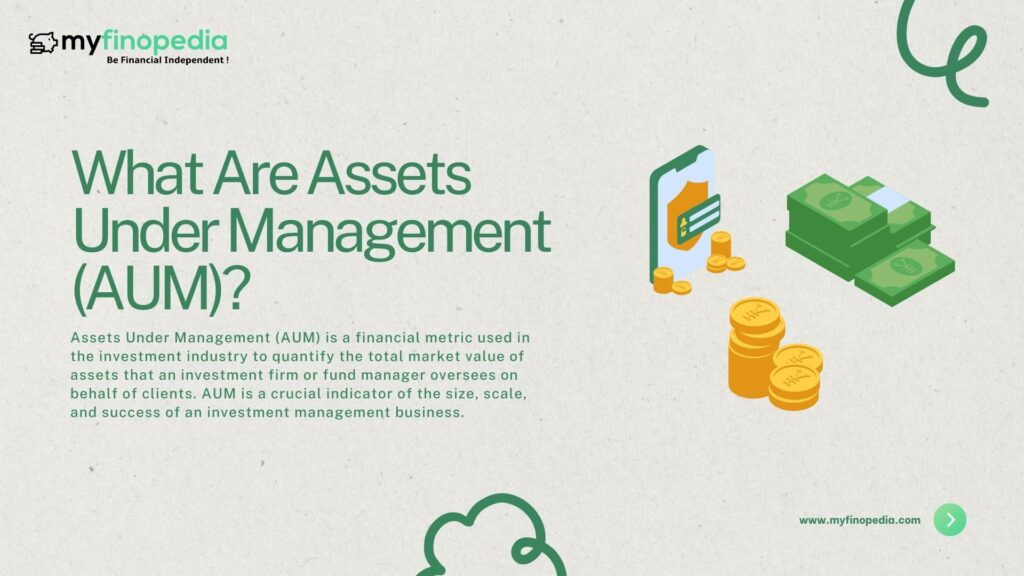Assets Under Management (AUM) is a financial metric used in the investment industry to quantify the total market value of assets that an investment firm or fund manager oversees on behalf of clients. AUM is a crucial indicator of the size, scale, and success of an investment management business.
AUM includes various types of assets, such as stocks, bonds, cash, real estate, and other securities, that are managed within a particular portfolio or fund. Here’s a more detailed explanation of AUM:
1. Components of AUM– AUM comprises both individual and institutional investments. Individual investors, through mutual funds, exchange-traded funds (ETFs), or private wealth management services, entrust their capital to investment professionals. Institutions, including pension funds, endowments, and insurance companies, also allocate significant sums of money to professional asset managers.
2. Calculating AUM– To calculate AUM, the market value of all assets within a portfolio is summed up. For publicly traded securities like stocks and bonds, this is relatively straightforward since their values are readily available. For private equity, real estate, or other illiquid investments, valuations may be less frequent and more complex.
3. Significance of AUM– AUM is a key metric for both investors and asset managers. For investors, it can be an indicator of the scale and stability of an investment firm. Larger AUM may imply greater experience and resources. However, excessively large AUM can raise concerns about the manager’s ability to effectively deploy capital or generate alpha (excess returns). Smaller AUM may indicate specialization but could raise questions about sustainability.
4. Revenue Generation– Investment management firms typically charge fees based on AUM. Common fee structures include a percentage of AUM (known as the management fee) and performance-based fees (incentive fees) tied to returns. As AUM grows, so does the firm’s revenue, assuming stable fee structures.
5. Regulatory Oversight– Many financial regulators require investment managers to report their AUM regularly. This helps regulators monitor the industry, ensure compliance with investment guidelines, and protect investors’ interests.
6. Benchmarking– AUM is used to rank and compare investment firms. Investors often use AUM as one of many factors when evaluating potential investment managers. It can provide insights into a firm’s ability to attract and retain clients.
7.Challenges and Risks– Managing large AUM can be challenging. As AUM increases, it becomes harder to find suitable investment opportunities without significantly impacting market prices. This is known as “asset bloat.” Additionally, managers may face liquidity constraints and risk concentration as AUM grows.
In conclusion, Assets Under Management (AUM) is a critical metric in the investment industry, representing the total value of assets that an investment manager or firm is responsible for. It serves as an indicator of scale, revenue potential, and regulatory oversight, while also posing challenges related to effective capital deployment and risk management as AUM grows.






